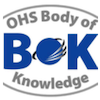Chapter 17.2: Health Effects of Hazardous Chemicals
Abstract
Toxicology has been referred to as ‘the science of safety.’ To understand the potential
impact of toxins on the human body and to effectively contribute to mitigating the health
impacts of hazardous chemicals on workers and others, generalist OHS professionals
require knowledge about some fundamental aspects of toxicology. This chapter (one of four
in a series of OHS Body of Knowledge chapters focused on hazardous chemicals), reviews
some general principles of toxicology, including the dose-response relationship, LD50 values,
acute and chronic toxicity, absorption, distribution, excretion and biotransformation. It
addresses the classification of toxins and provides information on three specific groups of
toxins with workplace relevance – carcinogens, reproductive and developmental toxins, and
teratogens. It considers measures to protect workers, including future directions for worker
health surveillance, and implications for OHS practice.
Keywords
chemical, health, toxicology, hazardous substances, OHS, chemical health effects
Contextual
Current Version: 2023
Chapter 17.2: Health Effects of Hazardous Chemicals
Table of contents
| 1 | Introduction |
| 2 | General principles of toxicology |
| 2.1 | Dose-response relationship |
| 2.2 | LD50 values |
| 2.3 | Acute vs chronic toxicity |
| 2.4 | Absorption |
| 2.5 | Distribution |
| 2.6 | Excretion |
| 2.7 | Biotransformation |
| 3 | Classification of toxins |
| 4 | Examples of toxin groups affecting DNA and gene expression |
| 4.1 | Carcinogens |
| 4.2 | Reproductive and developmental toxins |
| 4.3 | Teratogens |
| 5 | Measures to protect workers |
| 5.1 | Future directions for worker health surveillance |
| 6 | Implications for OHS practice |
| 7 | Summary |
| References | |
Chapter 17.2: Health Effects of Hazardous Chemicals
Prof. Mike Capra AM, BSc, MSc, PhD, FAIHS
Emeritus Professor in OHS, School of Earth and Environmental Sciences, The University of Queensland
Mike has held academic positions at several Australian and overseas universities. He hasbeen involved in curriculum development of OHS education in Australia and Vietnam. He was the inaugural chair of the Australian Occupational Health and Safety Education Accreditation Board, a position he held for 5 years. His major research interests have been in natural and artificial toxins and health aspects of toxin exposure. Mike has conducted many international consultancies and held various advisory positions in occupational and environmental health and OHS education.
Dr Scott Hahn BA, DipEd, PhD, MOHS, MBBS, PGDipAerospaceMed, DAvMed, MRO, IME
Medical Officer, Royal Australian Army Medical Corps, Queensland Health and Australian Government Department of Veterans’ Affairs Scott is both a medical doctor and a PhD in environmental toxicology. Prior to working in medicine, he was a university academic in public health and biomedical science. Since then, Scott has worked in many national and international locations while serving in the Australian Army Medical Corps with Land, Joint Health, Special Operations and Army Aviation Commands. Also, he provides medical advice to the Department of Veterans’ Affairs, and emergency and primary health care in Queensland rural hospitals. His research interests and publications relate predominantly to his work in environmental toxicology, OHS and occupational medicine.
Chapter 17.2: Health Effects of Hazardous Chemicals
Learning Outcomes:
The OHS Body of Knowledge takes a conceptual approach which enables it to be applied in different contexts and frameworks.
To optimise its value for education and professional development, learning outcomes have been developed for each technical chapter in the Body of Knowledge.
The learning outcomes as described give an indication of what should be the capabilities of an OHS professional; it is up to those developing OHS education programs, OHS professionals planning their CPD or recruiters or employers selecting or developing people for the OHS function to consider the required breadth vs. depth.
Please read the section on using the learning outcomes before delving into the learning outcomes of the individual chapters.



